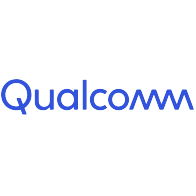6G-Status Update June 2025
While 5G and 5G-Advanced networks are being commercially deployed, work has already started to define 6G networks. The move from one generation to the next follows a systematic process that involves many actors across the industry and takes considerable time. Notably, the target date to commercialise 6G networks is 2030, and work has already begun to pave the way for this transition.
The first step in defining a new generation is to ensure that the most-advanced research results are considered. Research is an ongoing process that typically takes place at institutional, national and regional levels, but each new generation presents an opportunity to capture those results and use them as a basis for standardisation. For 6G, these research activities have been underway for some time and early results give an indication of the capabilities that 6G may offer.
ITU Framework
One of the fundamental characteristics of mobile systems is that they need to be interoperable globally. Users expect their devices to work wherever they are, and this requires cooperation at the international level. This cooperation has proven to be successful for 2G, 3G, 4G and 5G and therefore provides a good basis for the development of 6G.
The International Telecommunication Union (ITU) has already published its IMT-2030 framework, also known as ITU-2023, which lays out a set of objectives for 6G. This framework will form the basis of detailed work on specifications that will be undertaken by organisations such as 3GPP.
The framework captures the breadth and depth of usage scenarios for 6G. The report graphic confirms that 6G, the hexagon, will be an evolution of 5G and IMT-2020, the inner circle. This is crucial for safeguarding existing investments.
The illustration also indicates that 6G will be the first generation to go beyond pure communication to include an integrated “sensing” capability. The inclusion of sensing capabilities in mobile networks will open many opportunities for innovative service offerings.
6G-Status Update June 2025
WeChat: GSA Express

© GSA 2025
GSA Research
Mobile industry research is the backbone of GSA activity and covers topics from devices, chipsets and technology, to networks, features and spectrum.
The GSA research team is constantly following market dynamics and activity to ensure the latest data is available to GSA users via the GSA website.
Data is updated monthly and quarterly and can be referenced by users who register for free on the GSA website and download multiple reports, charts and videos of webinars. GSA welcomes any contributions on industry data from mobile operators, vendors and suppliers what want to ensure accurate industry data is shared globally.
GSA GAMBoD Database
GSA reports are based on extensive data contained in the GSA GAMBoD databases, which is a resource available to GSA members and associates. Companies and policy makers can subscribe, as a GSA associate, to gain access to GSA databases and member reports for additional insights into the source data behind reports, which can be used for their own research purposes.
Discounted annual subscription are available to regulators, government agencies and licensed mobile operators.
Please email info@gsacom.com for more information.


